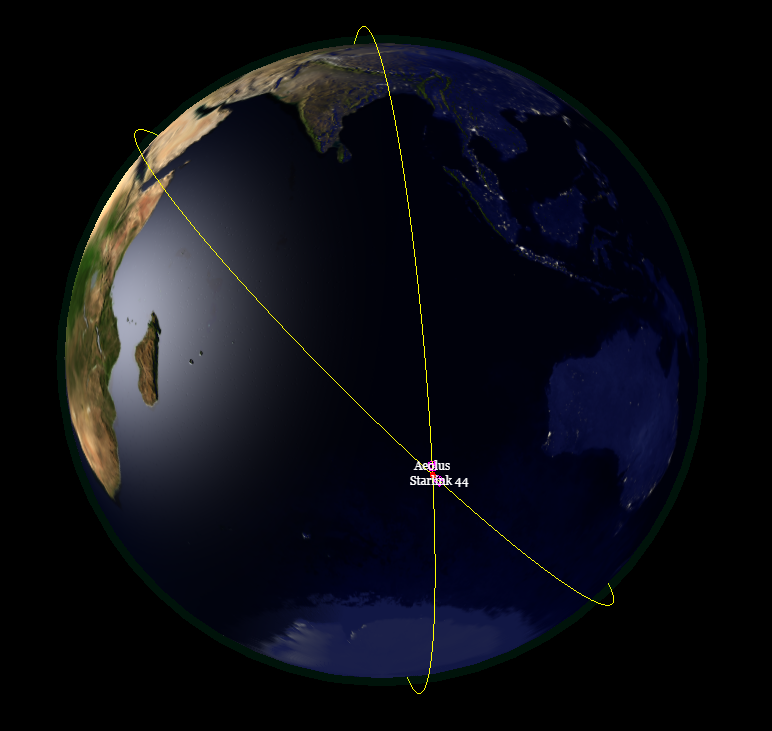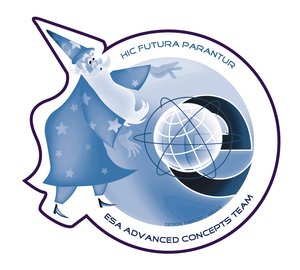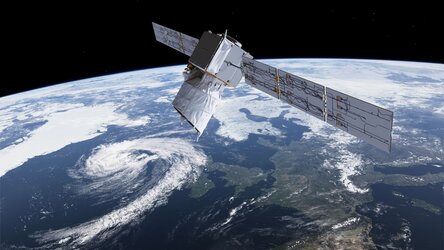AI challenged to stave off collisions in space
ESA is challenging machine learning experts to help forecast and prevent collisions in space. The Agency’s Advanced Concepts Team and Space Debris Office have come together to set up the latest in a series of AI-themed competitions based on actual space data.
Space is not as empty as it used to be. More than 34 000 items of space debris bigger than 10 cm are orbiting our planet. Of those, some 22 300 items are being regularly tracked by the telescopes and powerful radars of the US Space Surveillance Network and their trajectories maintained in a catalogue.

In highly-trafficked orbits, active collision avoidance has become a routine task in space operations. Space surveillance data reveal potential risks for satellites to collide with another space object at multiple kilometres per second – whether from active missions or space debris.
For a typical satellite in low-Earth orbit, hundreds of alerts are issued weekly, in the form of ‘conjunction data messages’. After automatic processing and filtering most of these are found to be low-risk, but that still leaves about two actionable alerts per mission per week, requiring detailed examination by a human analyst.
On average, ESA needs to perform more than one collision avoidance manoeuvre per satellite per year, the vast majority due to space debris.
ESA’s Space Debris Office at the European Space Operations Centre in Darmstadt, Germany, supports collision avoidance activities for the low-Earth-orbiting Aeolus wind-mapping mission, the Cryosat-2 ice mapper and the triple-satellite Swarm constellation, monitoring Earth’s magnetic field.
Their remit also extends to the four-satellite Cluster constellation – probing the magnetic field and its interaction with the solar wind – which is in an eccentric orbit climbing to the geostationary region, as well as more than a dozen missions from partner agencies or commercial operators.

Klaus Merz of the Space Debris Office explains: “The conjunction data messages that highlight these close approaches contain various details such as the identity of the satellite and potential collider, the time of closest approach, minimum distance and uncertainty. From some of these attributes we compute a collision risk.”
“In the days following the first message, as the uncertainties shrink, follow-up conjunction data messages are released, refining the knowledge acquired on their close encounter. Typically about three new messages become available daily, and over the course of a week the last obtained message can be assumed to include the best knowledge we have about the potential collision of these two objects.
“However we cannot wait for this last data message before taking action: In most cases the Space Debris Office will alert control teams and start thinking about a potential avoidance manoeuvre three days before the closest approach, then make a final decision one day before, based on a threshold of a one in a ten thousand risk of collision.

“In this challenge we ask competitors to build a model that makes use of the conjunction data messages recorded up to two days prior to the closest approach in order to predict the final risk, contained in the last available message before the approach.”
The Space Debris Office are releasing the last six years of conjunction data messages, with some of the later-stage messages kept hidden, for the competitors asked to predict their end state instead.
“The messages form a time series, so you can see how the risk evolves over time, as the uncertainties on satellite positions and observational errors shrink,” explains Dario Izzo of the Advanced Concepts Team.

“The challenge for machine learning is that the great majority of these conjunction data messages do not actually result in a significant collision risk, so this will be a matter of learning from a few relatively rare events. Out of a very large database, they will be learning only from the tail of the distribution, which makes it more difficult.”
This space collision avoidance challenge will be formally launched on Wednesday 16 October, and last for two months. Competing teams will be able to download the Space Debris Office conjunction data message database, provided with the kind permission of the Space Surveillance Network.
The competition is of more than purely academic interest, because the Space Debris Office is planning to develop technologies to further automate the collision avoidance process as part of ESA’s new Space Safety Programme, put forward for approval at November’s Space19+ Ministerial.
This development driven by the predicted growth in low-orbiting satellites and the coming wave of mega-constellations for which detailed case-by-case analysis of every high risk close approach event by human analysts will not be a not a viable option – nor will the actual preparation and execution of avoidance manoeuvres.















 Germany
Germany
 Austria
Austria
 Belgium
Belgium
 Denmark
Denmark
 Spain
Spain
 Estonia
Estonia
 Finland
Finland
 France
France
 Greece
Greece
 Hungary
Hungary
 Ireland
Ireland
 Italy
Italy
 Luxembourg
Luxembourg
 Norway
Norway
 The Netherlands
The Netherlands
 Poland
Poland
 Portugal
Portugal
 Czechia
Czechia
 Romania
Romania
 United Kingdom
United Kingdom
 Slovenia
Slovenia
 Sweden
Sweden
 Switzerland
Switzerland































